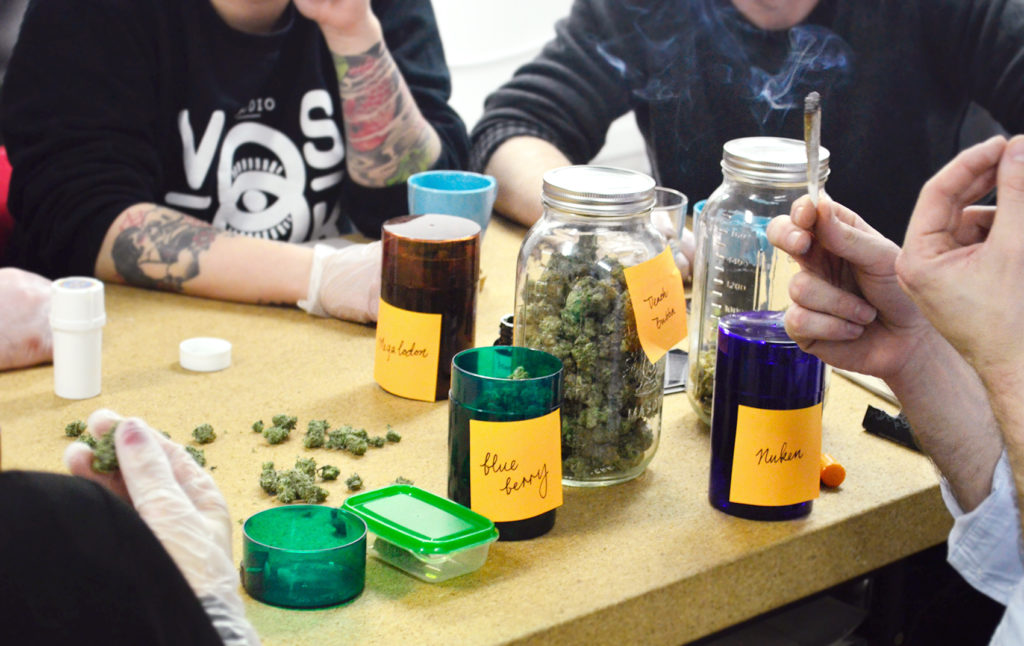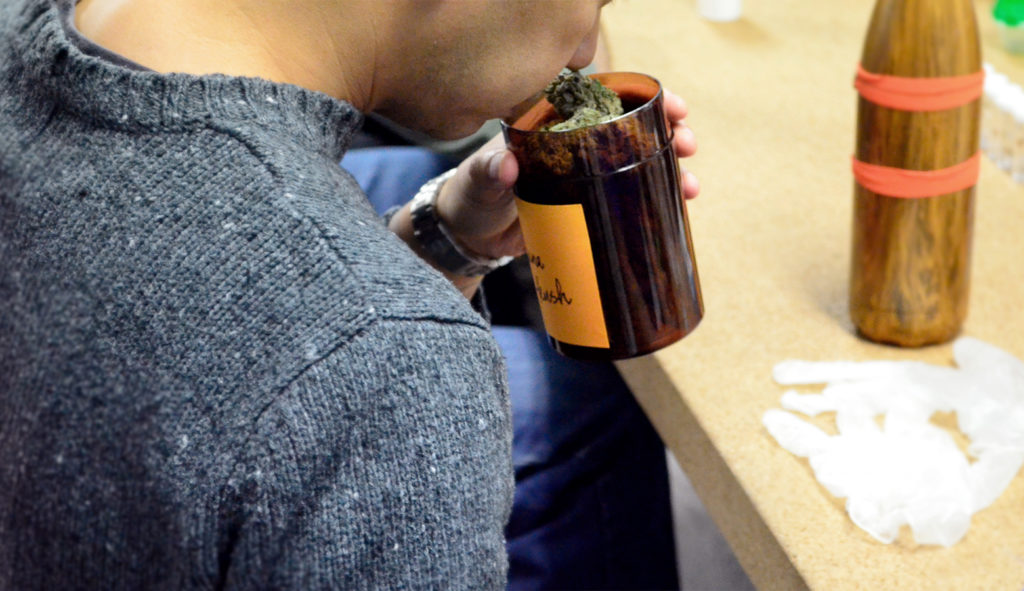
We discussed why cannabis prices change so drastically over the course of the year in Vancouver and what the predictable and unpredictable forces in shaping this market are.
Heat and Proliferation of Spores during the spring will cause an increase in prices every year starting in April, which is typically “rock bottom”. From there, prices usually increase gradually until reaching the peak months (also known as “dry season”) which can last from late May until August/October when all the greenhouse and outdoor grows finally come in. After October prices start to lower again as supply increases and more indoor growers return from their summer break.
USA & Canadian east coast buying/selling trends significantly affect BC prices, as this will greatly dictate how much supply is available in the local market. In the past few years, production capacity has increased significantly in both the US and in the east of Canada, causing prices to lower significantly as a whole particularly in the BC market, prices in BC and the rest of Canada still fluctuate depending greatly on the needs of these two sectors. When foreigners or east coasters are buying, we see an increase in local prices, conversely when the US and east coast stop buying, prices plummet in our region.
Tip: Organizations should keep these cycles in mind and plan to get the best of each season. Slowly building up stock during times of plenty can really help an organization get through the hard times.
We learned a few tips about how to quickly calculate dosage in your mind:
* Every workshop we will review different dosage techniques for different products

A quick summary of the points discussed:
Tip: Buy your cannabis with more moisture than the standard “crispy” finish that most growers tend to deliver. More moisture means more monoterpenes – Myrcene, Limonene, A-Pinene, Linalool – all of which are highly psychoactive in different ways depending on their combination, form of ingestion and who is taking them, and all of which are highly volatile. Sesquiterpenes like caryophyllene and Humulene are less of a concern as they can survive longer even in dry conditions. Remember that putting moisture back in your cannabis will not replace the lost terpenes, although it may improve smell slightly because hydrocarbons can form longer chains when there is sufficient moisture for them to be carried into the air.
We wrapped up the session by talking about Jim Wakeford, a largely forgotten hero of the struggle for patient rights in Canada. Jim lost his life to HIV after many years of fighting, during which time he managed to successfully sue the federal government because they could not provide a strain that was good enough to give him the benefits that he needed. He used a strain that was bred for him by a friend, which tended to contain around 30% THC. This strain was used as part of his argument to win a successful lawsuit against a government who could not provide a legal product that could demonstrate even remotely the same level of contents or overall quality. This strain can still be found today in the BC region, and it provides an excellent opportunity for dispensaries to share this story and the many benefits that this strain with their clients.





MORE FROM THE BLOG





WAIVER & RELEASE (the “Release”)
This event is conducted by CannaReps Consulting Ltd. (“CannaReps or Company”). Please read and submit below.
I am an attendee at an event hosted by CannaReps (the “Workshop“). I release CannaReps from any and all liability, claims, demands, actions and causes of action whatsoever arising out of or related to any loss, damage or injury, including death, that may be sustained by me while participating in the Workshop.
I understand and agree that:
CONFIDENTIALITY
Any confidential or proprietary information or material relating to the Company’s operations or business which I obtain from the Company or its officers, employees, agents, suppliers or customers or otherwise by virtue of my participation with the Company or by the Company’s predecessor. Confidential or proprietary information or material includes, without limitation, the following types of information or material, both existing and contemplated, regarding the Company or its parent, affiliated or subsidiary companies: corporate information, including contractual licensing arrangements, plans, strategies, tactic, policies, resolutions, patents, trademarks, printed or digitized materials, handouts and brochures. Including any marketing information including sales, investment and product plans, customer lists, strategies, methods, customers, prospects and market research data. Including trade secrets; technical information, including drawings, designs, personal information (the “Confidential Information”).
I understand that the copyright and proprietary interest of any material provided to me belongs to CannaReps. All shared experiences from the Workshop are to remain confidential and private. I agree not to disclose any of the information learned during the Workshop outside of the Workshop except with others who attend the Workshop. I will not use any audio or video recording equipment during the Workshop, unless CannaReps approves of the recording and filming by providing prior written consent. I understand that any audio or video recording made during the Workshop is the property of CannaReps. I will not use CannaReps’ information for business or commercial purposes, without first obtaining the prior written consent of CannaReps.
INTELLECTUAL PROPERTY
I understand, acknowledge and agree that all copyright, trademarks, trade secrets, intellectual property rights, and any other rights arising from any designs, and all of the work products and materials conceived, developed or created by the CannaReps and any rights ancillary thereto (collectively, “Intellectual Property Rights”) which were solely or jointly with others, conceives, designs, creates, derives, develops or makes in the course of or in connection with the work with CannaReps shall belong solely to CannaReps. If you haven’t already, you shall promptly disclose to CannaReps in writing any and all Intellectual Property Rights, conceived, created, derived, developed or made in the course of or otherwise in connection with my participation with CannaReps, whether alone or with others, and whether during work shop hours or through the use of facilities and properties of CannaReps.
INDEMNITY
I agrees to indemnify and hold harmless CannaReps, its officers and directors, employees and its affiliates and their respective successors and assigns and each other person, if any, who controls any thereof, against any loss, liability, claim, damage and expense whatsoever (including, but not limited to, any and all expenses whatsoever reasonably incurred in investigating, preparing or defending against any litigation commenced or threatened or any claim whatsoever) arising out of or based upon any false representation or warranty or breach or failure by me to comply with any covenant or agreement made by me herein or in any other document furnished by me to any of the foregoing in connection with this transaction.
CONSENT
Notwithstanding the immediately preceding paragraph, I consent to and grant CannaReps, the Workshop, and its assignees, the right to photograph and record me, my name, voice, appearance and likeness and other material furnished by me for use on trusted online media which include, but are not limited to, their website and social media pages. My hereby release said matter in perpetuity to CannaReps without prejudice and acknowledge that this consent is freely given without expecting compensation.
By submitting my email address below, I agree to receive electronic communication from CannaReps including personal course information, news, updates and promotions regarding CannaReps’ products. I understand that I can withdraw my consent at any time.
PRIVACY POLICY
Protecting your privacy is important to CannaReps. This Privacy Policy (“Privacy Policy”) set outs the ways in which we use your information and how we ensure its protection.
CannaReps will only collect personal information (“Information”) that will allow us to provide, enhance, market or improve our events and services. Information is collected by means of registration for any CannaReps sponsored event or service. Information collected may include name, age, gender, address, email address, payment information, and geographical information.
CannaReps may share Information. CannaReps retains the right to share Information and other statistics with our partners, prospective advertisers, and other third parties for the purposes of improving, protecting, enhancing, and promoting our events and services. CannaReps may also disclose information to our affiliates, agents, contractors, and service providers in order to facilitate the functioning and maintenance of our events and services. We will not sell any information to advertisers or other third parties.
This Privacy Policy only covers the treatment of Information and other non-identifiable information gathered by CannaReps. This Privacy Policy does not apply to the practices of any third-party services. CannaReps does not take responsibility for the content or privacy policies of any third parties. CannaReps recommends that you review the privacy policies of any third-party service providers or events you access, use, or register for through our events or services.
This Privacy Policy has been established to help you understand our commitment to protecting your privacy. CannaReps reserves the right, at any time, to change or replace any portion of our Privacy Policy. You will be notified of any changes, if we believe, they materially impact your experience at our events or services. Continued use of our services after any change to the Private Policy constitutes an acceptance of those changes.
By submitting this Release and providing Information during the registration process, including the Exhibitor’s Agreement, you consent to the collection and use of your Information for these purposes.
If you have any questions or concerns please email us at info@cannareps.ca.